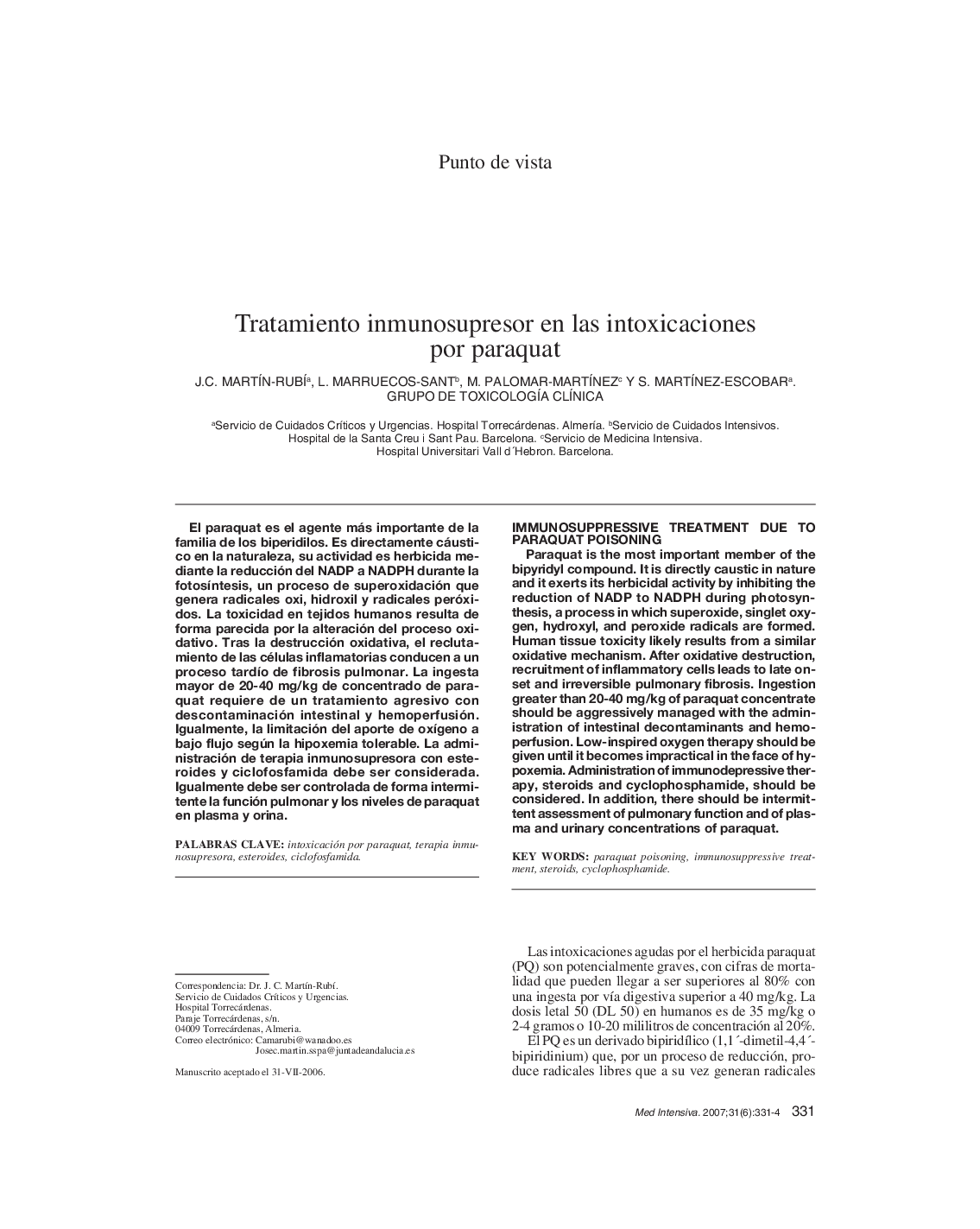| Article ID | Journal | Published Year | Pages | File Type |
|---|---|---|---|---|
| 3113805 | Medicina Intensiva | 2007 | 4 Pages |
Abstract
Paraquat is the most important member of the bipyridyl compound. It is directly caustic in nature and it exerts its herbicidal activity by inhibiting the reduction of NADP to NADPH during photosynthesis, a process in which superoxide, singlet oxygen, hydroxyl, and peroxide radicals are formed. Human tissue toxicity likely results from a similar oxidative mechanism. After oxidative destruction, recruitment of inflammatory cells leads to late onset and irreversible pulmonary fibrosis. Ingestion greater than 20-40 mg/kg of paraquat concentrate should be aggressively managed with the administration of intestinal decontaminants and hemoperfusion. Low-inspired oxygen therapy should be given until it becomes impractical in the face of hypoxemia. Administration of immunodepressive therapy, steroids and cyclophosphamide, should be considered. In addition, there should be intermittent assessment of pulmonary function and of plasma and urinary concentrations of paraquat.
Keywords
Related Topics
Health Sciences
Medicine and Dentistry
Critical Care and Intensive Care Medicine
Authors
J.C. MartÃn-RubÃ, L. Marruecos-Sant, M. Palomar-MartÃnez, S. MartÃnez-Escobar, Grupo de toxicologÃa clÃnica Grupo de toxicologÃa clÃnica,
